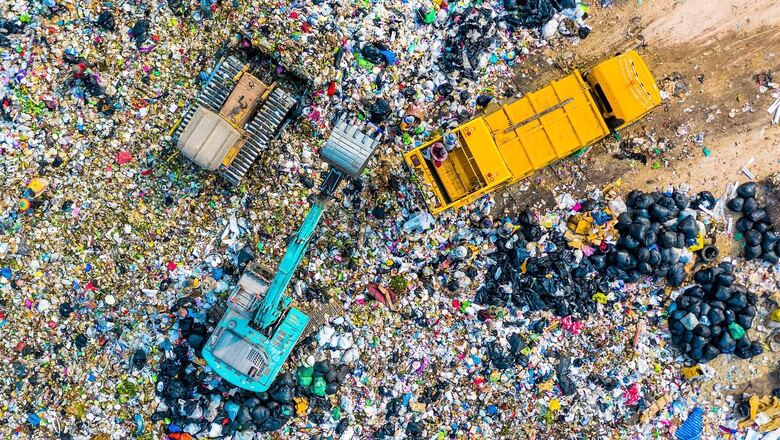
views
India is among the 28 countries at a high risk of e-waste congestion, which could make proper handling of the material challenging in the coming years, shows a new mathematical model that has mapped the global movement of hazardous waste over the past two decades.
Over 7-10 billion tonnes of e-waste is produced annually across the world, of which 300-500 million tonnes is hazardous – toxic, flammable and posing a grave health risk. A vast quantity of this waste is traded between countries as second-hand equipment, discarded electronic items – the volume of which has surged by 50% over the past three decades.
The latest study published in the journal Nature Communications tracked the global trade of 108 categories of waste across countries from 2001 to 2019 (except 2010). The researchers used the data of total imported and exported waste self-reported by countries as part of an international agreement – the Basel Convention. This, however, did not include the enormous waste that is illegally dumped in the least developing countries every year.
The team co-related this data with the Environmental Performance Index of each country to develop a mathematical model and called it – the world-wide ‘waste web’. It identified the time at which a given country could reach the threshold of its carrying capacity. “Using this strategy, we have identified countries which are at high risk due to their relatively fast congestion of waste and their poor track record on environmental performance,” said the team from Spain’s Institute of Interdisciplinary Physics and Complex Systems, which led the study.
The study found India to be among 28 high-risk countries, along with China, Pakistan, Bangladesh, Afghanistan, Mexico and several African countries, that could face a serious waste congestion, with the influx of waste likely to outstrip their individual processing capacities. It also raised concerns over its consequences on the environment and the health of public. Of the 28 countries, 12 are in Africa, which has become the biggest graveyard of hazardous waste, followed by South Asia with nine countries, and Middle East and Europe, with four countries each.
“Global waste trade was at its peak in the early 2000s. The waste was getting dumped in China, India, and was processed in a crude manner. India was not so technologically advanced, but it was handling a huge amount of waste generated from the technological revolution in other countries,” said Priti Mahesh, the chief programme co-ordinator for environmental research organisation Toxic Link. “But a lot has changed over the past decade. Several countries, including India, have restricted import of e-waste and brought regulations in place. Although, environmentally sound processing still remains a matter of concern. A lot of this waste is ending up in the informal sector, where it is not still not recycled in a safe way.”
Although India banned the import of e-waste under the E-Waste (Management) Rules, 2016, a significant quantity still ends up in country’s informal markets from abroad. To make matters worse, the country has not been able to effectively deal with the recycling of huge piles of e-waste generated every year across states.
According to the government, India’s e-waste generation has increased from 7.08 lakh tonnes in 2017-18 to 10.14 lakh tonnes in 2019-20, mainly due to the expanding sales of electrical and electronic equipment (EEE) in recent years.
Most of this hazardous waste is getting dumped in domestic landfill sites or recycled by informal workers either by burning to recover precious metals or using acid to extract raw material which releases toxic metals. This is not only endangering the lives of the workers and their families, but also contaminating air, water and soil.
“We need cutting-edge technology and investment to fix the loopholes in our e-waste processing. No other country has such a huge informal sector, which still engages in collection, transportation and recycling of e-waste. We need to make them a part of the value chain and empower them with environmentally sound technology, so that we are able to recycle and even recover rare metals in the safest possible way,” said Satish Sinha, associated director, Delhi-based Toxic Link, which has been working in the domain for over two decades.
Read all the Latest News India and Breaking News here




















Comments
0 comment